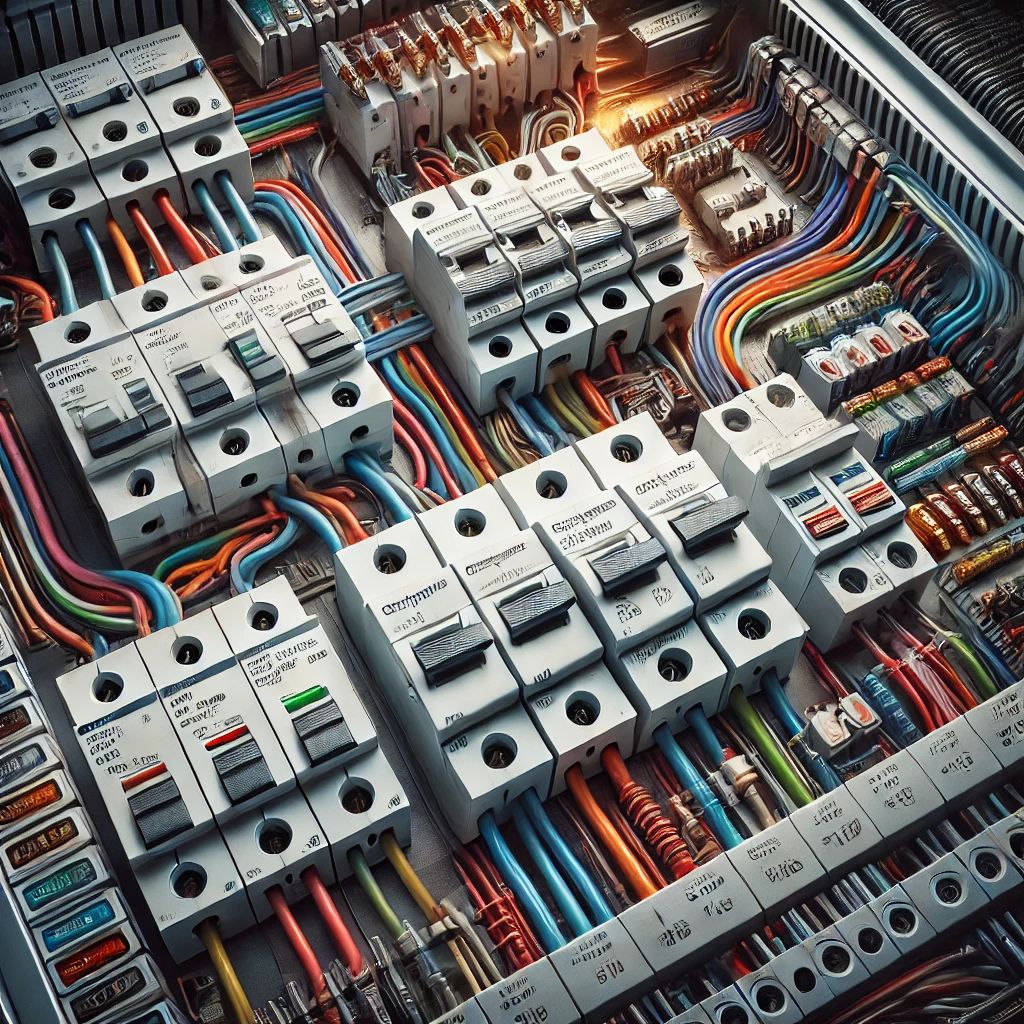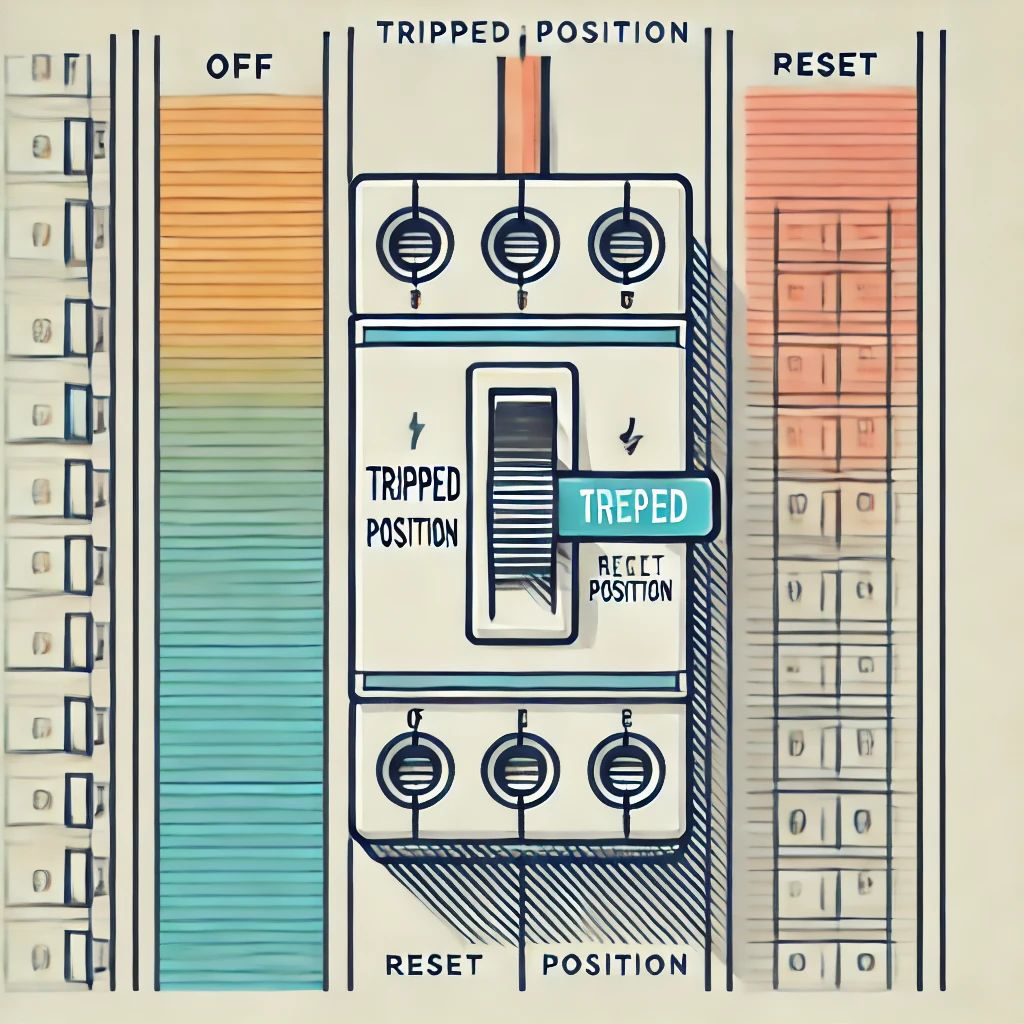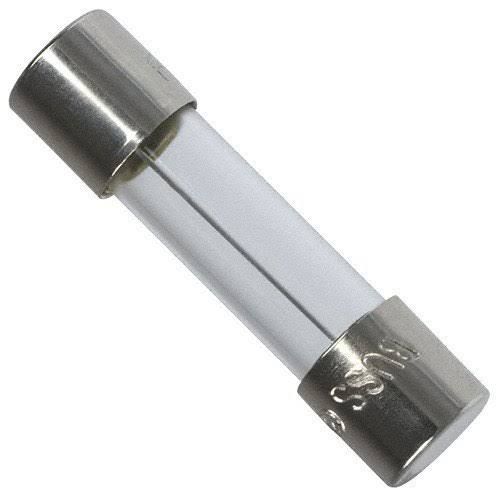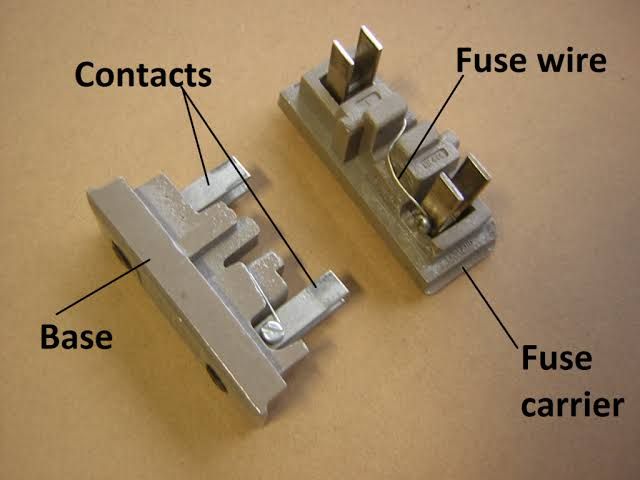Introduction
Circuit breakers and fuses are critical for ensuring electrical safety in both residential and commercial settings. By understanding how they work and when to replace them, homeowners and business owners can prevent electrical fires and ensure a reliable power supply.
1. What Are Circuit Breakers and Fuses?

Circuit breakers and fuses are devices designed to interrupt the flow of electricity in a circuit when they detect overload or fault conditions. Their primary function is to prevent damage to electrical systems and reduce the risk of fires caused by overheating.
- Circuit Breakers: A resettable switch that trips when there’s an overload.
- Fuses: A one-time-use component that blows or melts when current flow exceeds its rating.
Both serve a similar purpose but operate in slightly different ways, making them suitable for specific applications.
2. How Do Circuit Breakers Work?
Circuit breakers are automated switches designed to stop the flow of electricity if they detect an overload or a short circuit. Here’s a breakdown of how they work:
- Detection of Fault: When too much current flows, a mechanism inside the circuit breaker senses the excess.
- Interruption of Power: The breaker trips, stopping the electrical current to prevent overheating or damage.
- Reset Capability: Circuit breakers can be reset after they trip, making them reusable and more convenient for household and industrial applications.

Types of Circuit Breakers:
- Standard Circuit Breakers: Common in homes, they protect against overloads and short circuits.
- Ground Fault Circuit Interrupters (GFCIs): Protect against electric shock, typically installed in bathrooms and kitchens.
- Arc Fault Circuit Interrupters (AFCIs): Detect dangerous arcing in wiring, reducing fire risks.
3. Understanding Fuses and Their Role
Fuses protect electrical circuits by “blowing” or melting when excess current passes through, creating a break in the circuit. Unlike circuit breakers, fuses must be replaced once they’re used.
- Construction: Made of a metal strip or wire, fuses melt when overheated, stopping the electrical flow.
- One-Time Use: After a fuse blows, it needs to be replaced with a new one, ensuring the circuit is safeguarded from recurring issues.
Common Types of Fuses:
- Cartridge Fuses: Used in industrial settings and older home systems.
- Plug Fuses: Common in residential use, typically found in fuse boxes.


4. Why You Need Circuit Breakers and Fuses in Your Electrical System
Circuit breakers and fuses are essential for electrical safety, helping prevent serious hazards such as:
- Fire Prevention: By cutting off excess current, they minimize the risk of electrical fires.
- Protection of Appliances and Wiring: These devices help avoid costly repairs and damage by stopping surges.
- Ensuring Safety: Protecting both people and property from electrical faults or shocks.
In modern homes, circuit breakers are more commonly used than fuses, due to their resettable nature and long-term cost-effectiveness.
5. Signs That It’s Time to Replace a Circuit Breaker or Fuse
Knowing when to replace these components can prevent larger electrical problems:
- Frequent Tripping or Blowing: Indicates an overloaded or outdated system.
- Visible Damage: Burn marks or a burnt smell from the breaker or fuse box.
- Aging Electrical System: For homes older than 20 years, consider upgrading the system for safety.
6. How to Choose the Right Circuit Breaker or Fuse for Your Home
If you need a new breaker or fuse, it’s crucial to select the right type for your electrical panel:
- Match the Rating: Ensure the ampere rating matches your panel’s requirements.
- Consult an Electrician: For installation or replacement, hiring a licensed electrician ensures proper setup and reduces risks.
Conclusion
Circuit breakers and fuses are indispensable components of a safe electrical system. Understanding their functions and maintenance can help you keep your property and family safe from electrical hazards.
Regular inspections, timely replacements, and professional installations are key to a reliable electrical system. If you’re unsure about your setup, consult a certified electrician to avoid risks and maintain safety.
